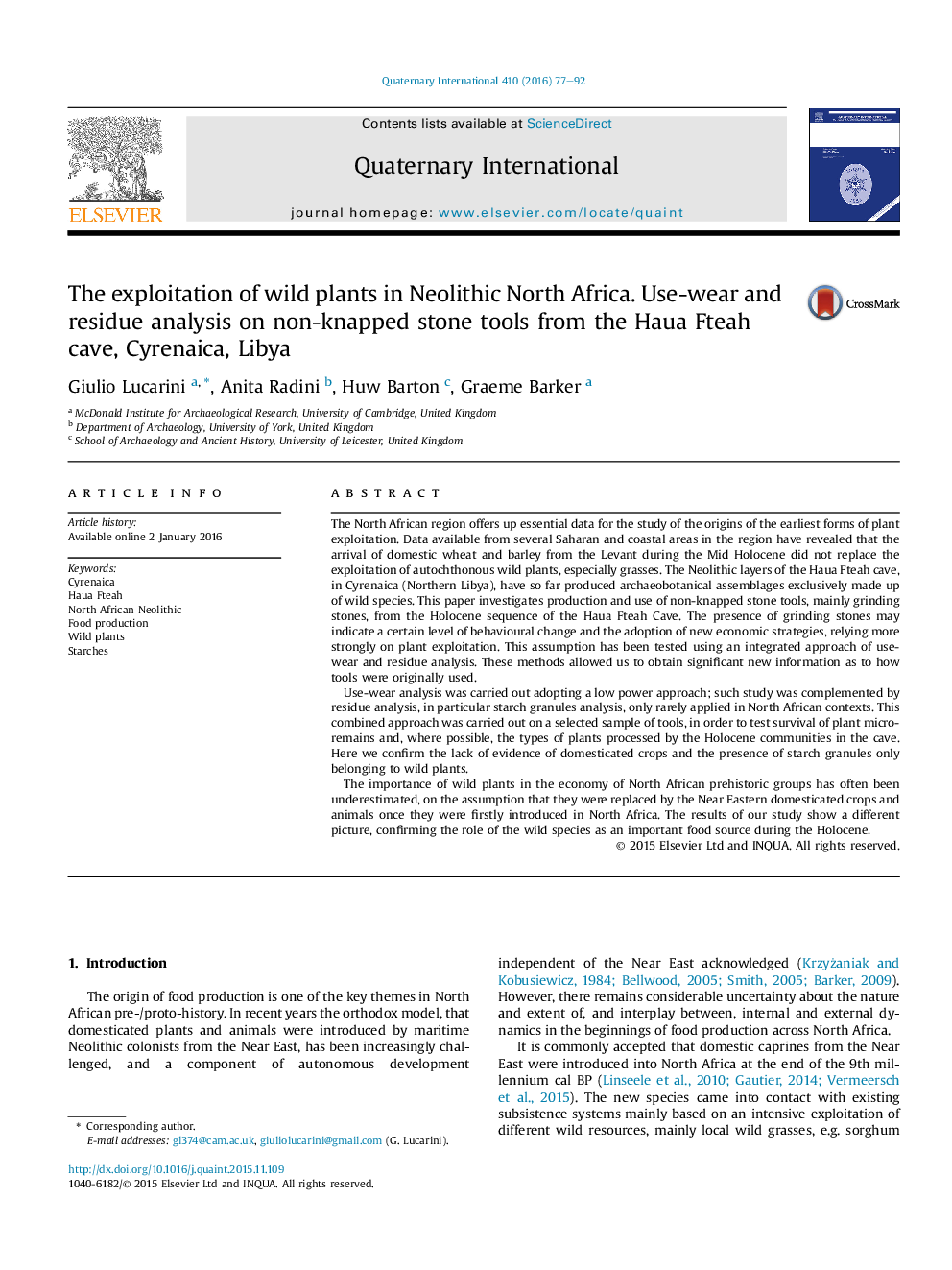| کد مقاله | کد نشریه | سال انتشار | مقاله انگلیسی | نسخه تمام متن |
|---|---|---|---|---|
| 1039895 | 1377969 | 2016 | 16 صفحه PDF | دانلود رایگان |
The North African region offers up essential data for the study of the origins of the earliest forms of plant exploitation. Data available from several Saharan and coastal areas in the region have revealed that the arrival of domestic wheat and barley from the Levant during the Mid Holocene did not replace the exploitation of autochthonous wild plants, especially grasses. The Neolithic layers of the Haua Fteah cave, in Cyrenaica (Northern Libya), have so far produced archaeobotanical assemblages exclusively made up of wild species. This paper investigates production and use of non-knapped stone tools, mainly grinding stones, from the Holocene sequence of the Haua Fteah Cave. The presence of grinding stones may indicate a certain level of behavioural change and the adoption of new economic strategies, relying more strongly on plant exploitation. This assumption has been tested using an integrated approach of use-wear and residue analysis. These methods allowed us to obtain significant new information as to how tools were originally used.Use-wear analysis was carried out adopting a low power approach; such study was complemented by residue analysis, in particular starch granules analysis, only rarely applied in North African contexts. This combined approach was carried out on a selected sample of tools, in order to test survival of plant micro-remains and, where possible, the types of plants processed by the Holocene communities in the cave. Here we confirm the lack of evidence of domesticated crops and the presence of starch granules only belonging to wild plants.The importance of wild plants in the economy of North African prehistoric groups has often been underestimated, on the assumption that they were replaced by the Near Eastern domesticated crops and animals once they were firstly introduced in North Africa. The results of our study show a different picture, confirming the role of the wild species as an important food source during the Holocene.
Journal: Quaternary International - Volume 410, Part A, 29 July 2016, Pages 77–92
